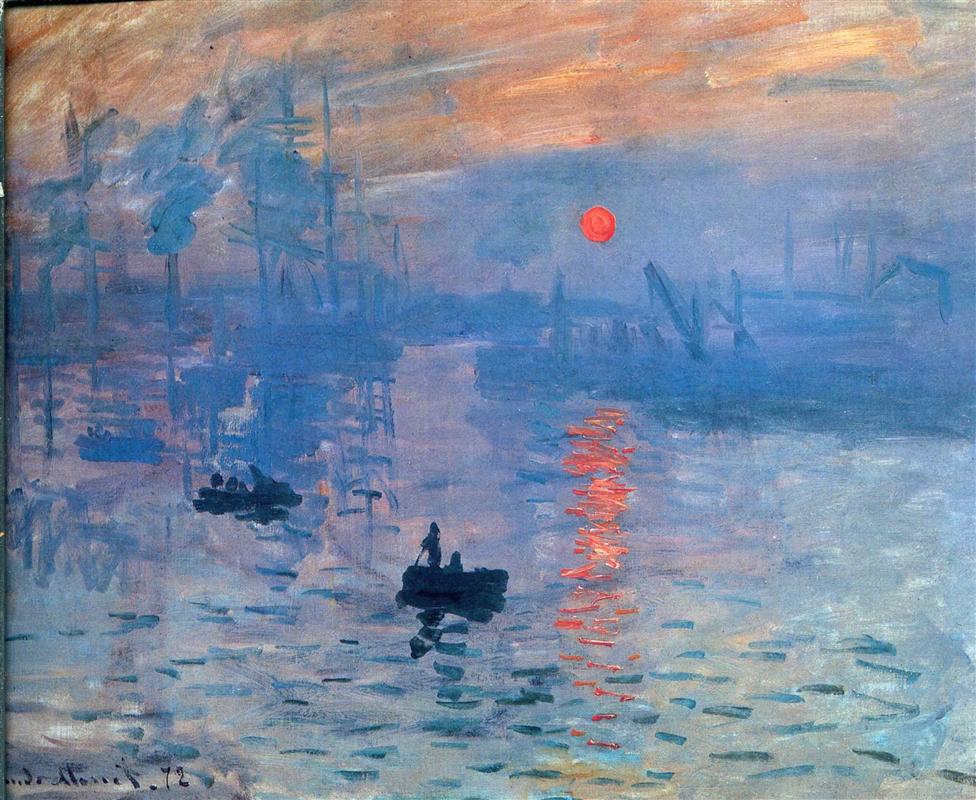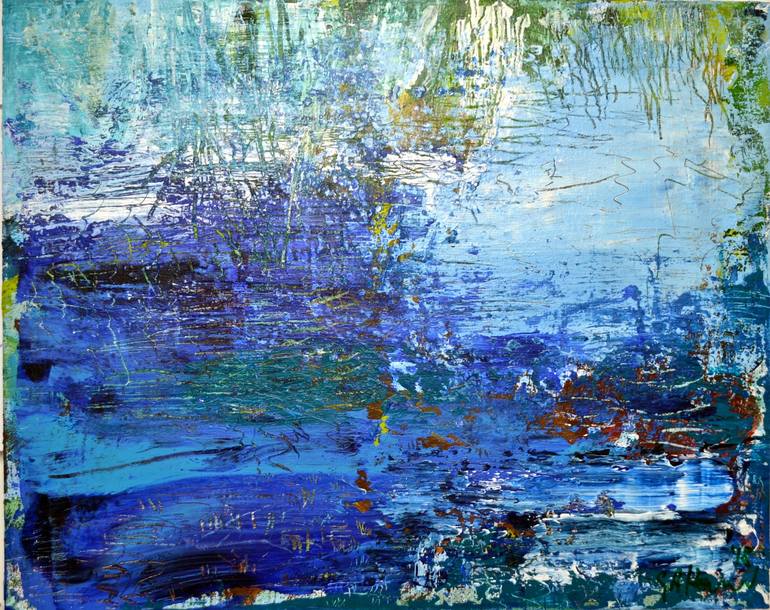I've been looking for videos to post of the kind of loose brushwork we've been talking about and this one from Peter Wood Arts is fun. He starts with a dark blue underpainting.

Another way to describe it is "Optical Mixing" rather than mixing on the palette. That was invented by he Impressionist painters like Claude Monet. Optical mixing eliminates perfect coverage and smoothly-blended transitions.
 |
Claude Monet, Impression, sunrise 1872 |
Jackson's Art Blog describes it:
"The Impressionist painters used layers of colours, leaving gaps in the top layers to reveal the colours underneath. The technique is achieved through hatching, cross-hatching, stippling, drybrushing, and sgraffito (scratching into the paint). Mixing of brighter colours is done directly on the canvas to aid in creating the broken colour effect and only darker colours are mixed on the palette."Bring an old canvas board to play on. We will paint abstract water together, just playing with ways to apply paint and utilize optical mixing.
 |
| Abstract water painting, Geoffrey Howard |
Comments
Post a Comment